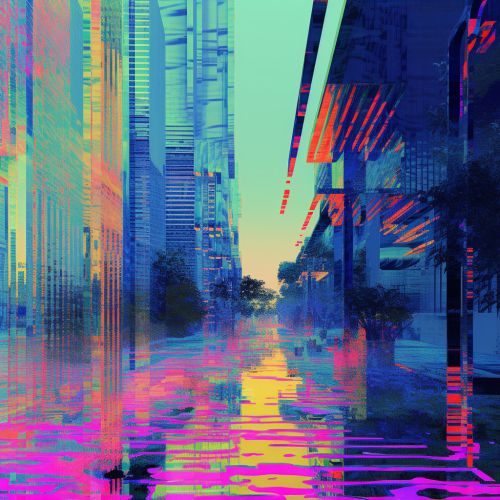Data-Moshing
Introduction
Data moshing, also known as datamoshing, is a form of digital media manipulation that utilizes compression artifacts and data corruption as a creative tool. It is a technique that emerged in the early 2000s, with its roots in the glitch art movement. Data moshing primarily involves the manipulation of digital video to achieve a variety of unique visual effects. This process intentionally introduces errors into the digital code of a video file, resulting in a distorted, 'glitched' aesthetic.


History
The origins of data moshing can be traced back to the early days of digital media. As technology advanced and digital video became more prevalent, artists and programmers began to experiment with the possibilities of manipulating digital data. This led to the emergence of glitch art, a movement that embraces the aesthetic of digital errors and artifacts. Data moshing, as a subset of glitch art, emerged as a distinct technique in the early 2000s.
Techniques
Data moshing involves the manipulation of the digital data within a video file. This is typically achieved through the use of specialized software or coding languages such as Python or Perl. The most common technique involves altering the video's I-frames (intra-coded picture frames), which are the keyframes that provide a reference point for the rest of the video. By removing or altering these I-frames, the video's P-frames (predicted picture frames) and B-frames (bi-predictive frames) are left without a reference, resulting in a distorted, 'glitched' image.
Applications
Data moshing has been used in a variety of artistic and commercial contexts. It has been utilized in music videos, film, and digital art, and has also been used in advertising and marketing campaigns. Despite its origins in the underground art scene, data moshing has gained mainstream recognition and has been embraced by a number of high-profile artists and brands.
Impact and Influence
The impact of data moshing can be seen in the way it has influenced the aesthetics of digital media. It has contributed to a broader acceptance and appreciation of digital artifacts and glitches, and has challenged traditional notions of 'quality' in digital video. Furthermore, data moshing has also influenced the development of new software and tools designed to facilitate the creation of glitch art.
Criticisms and Controversies
Despite its popularity, data moshing has also been the subject of criticism and controversy. Some critics argue that the technique is overused and lacks originality, while others have raised concerns about the potential for data moshing to be used in malicious ways, such as in the creation of deepfake videos.
Future Directions
As technology continues to evolve, so too does the potential for new forms of data moshing. Advances in artificial intelligence and machine learning, for example, could open up new possibilities for automated and algorithmic data moshing. Furthermore, the increasing prevalence of virtual and augmented reality technologies could also provide new platforms for data moshing techniques.
